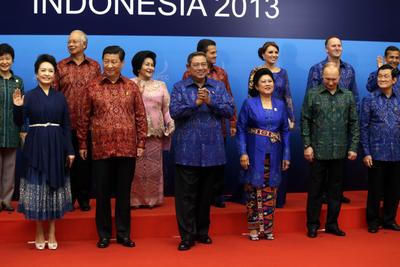Looking ahead, the most serious threats to the future of regional economies are global problems which will need global solutions. Asia Pacific governments need to take the lead in the G20 — most urgently to achieve a robust recovery from the 2008 global financial crisis. Only then will the world give sufficient attention to correcting the currently unsustainable trend of global warming and learn to manage international commerce in the 21st century.
APEC is already leading by example. Thanks to Indonesian leadership in 2013, APEC leaders are committed to transforming the Asia Pacific into a comprehensively connected region by 2030. Delivering that commitment will lead to significant new investment in transport, communications and energy links among Asia Pacific economies. The G20 is already trying to follow this example. Australia’s top priority, as G20 host for 2014, is to seize the global infrastructure opportunity to spark worldwide economic recovery.
The Asia Pacific region is already well integrated in terms of trade, but much more needs to be done to improve physical and financial integration. Dealing with across-the-border problems of connectivity and behind-the-border problems caused by needless differences in economic regulations is now far more important to business than further liberalisation of border barriers to trade or investment. Therefore, implementing the 2013 APEC Framework on Connectivity is the most efficient way to deepen regional economic integration.
Asia Pacific governments will need to overcome some important obstacles if they are to attract adequate investment, especially private investment, into economic infrastructure projects with long lead times. These problems include the region’s capacity for planning an orderly sequence of sound projects, regulatory and administration obstacles to construction, cost-recovery policy to translate economic to financial returns, and the region’s capacity to design and negotiate parameters for public–private partnerships.
As host of APEC in 2014, China’s biggest challenge will be to persuade APEC governments to commit adequate resources to launch pilot projects that fit into a long-term strategy to connect the region’s economies. That will not be easy. APEC governments have yet to establish a tradition of making coordinated commitments of funds to seize shared potential benefits. The decision to establish the Asian Infrastructure Investment Bank (AIIB), announced by President Xi Jinping in October 2013, provides a welcome new opportunity. Contributions of capital by APEC governments to the AIIB can finance early steps to implement the APEC Framework on Connectivity. That can avoid a long debate about whether APEC governments should contribute money to the APEC process and how APEC would manage finance and promote actual investments.
As a new institution, the AIIB has a strong incentive to make its mark by moving rapidly to finance some significant projects which promise sound economic rates of return. As a first step, the new AIIB can use a tiny part of its likely capital base to draw up a long-term APEC Master Plan on Connectivity to upgrade physical, institutional and people-to-people connectivity. The AIIB can also commission a full-scale feasibility study of significant opportunities to improve connections among some Asia Pacific economies. The need for investment is well documented. The Asian Development Bank estimates that developing Asian economies need to invest US$8 trillion from 2010 to 2020, just to keep pace with expected infrastructure needs.
A recent report by the World Bank and the World Economic Forum further explains that even modest improvements in trade logistics will yield economic returns far greater than getting rid of all remaining tariffs. The Asian Development Bank Institute has already prepared a detailed study of another significant opportunity — taking advantage of Myanmar’s recent decision to engage with the international economy to build high-capacity transport and communications links between East Asia and South Asia. Existing multilateral development banks can help to seize such opportunities. Their extensive experience can be tapped for feasibility studies and project preparation. As well as estimating the benefits and costs of projects, the feasibility studies can also assess opportunities to leverage private investment to complement potential loans by the AIIB and by existing development banks to the economies where the initial infrastructure projects would be located.
The examples discussed above are located on the Asian side of the Pacific. If APEC governments on the other side decided to participate in the new infrastructure development bank initiated by China, the AIIB could be transformed into an Asia Pacific Infrastructure Investment Bank, which could invest in projects to upgrade connectivity among all Asia Pacific economies. Looking ahead, an arm of such a development institution could also manage, on behalf of APEC, the huge capacity-building effort that will be needed to implement a long-term APEC Master Plan on Connectivity. This plan can set targets for ambitious, measurable but realistic improvements in connectivity. Meeting medium-term targets for making international commerce cheaper, easier and faster will allow APEC leaders to point to significant and measurable gains from their cooperation.
Andrew Elek is Research Associate at the Crawford School of Public Policy, Australian National University. He was the inaugural Chair of APEC Senior Officials in 1989.

